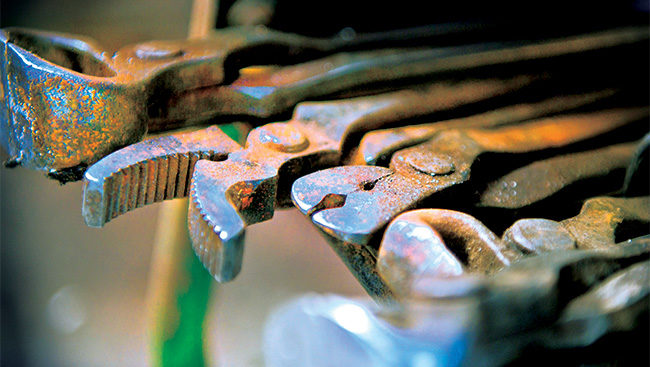American Farriers Journal
American Farriers Journal is the “hands-on” magazine for professional farriers, equine veterinarians and horse care product and service buyers.

As wear and tear takes its toll on our tools, a farrier’s instinct is to tweak, maintain or fix it. There are times, though, when we should resist our natural tendency to repair it.
Retiring a tool to the scrap heap isn’t always the easiest thing to do, particularly when your bottom line is telling you that a few quick swipes of a grinder will give you just a little more time with that pritchel. Most tools that are wearing still can do their job even though they are dull. Trying to stretch the life of a tool can make an already tough job even tougher, put unnecessary strain on your body, and in some cases, cause serious injury.
Keeping your tools clean, as well as lightly lubricating those with rivets, will help maintain them. Yet, despite our best efforts, they will wear out in time. Each tool wears differently, depending on who uses it, how it’s used, the frequency of use and the conditions under which it’s used.
Our tools have to be tough to survive all of the elements that we expose them to on a daily basis. The torque, beating and extreme temperature changes hasten deterioration. Nevertheless, wear and tear always seems to kind of sneak up on us, or at least on me anyway. By the time they feel just right, I might have gone past the point I can tune them up and get a little more use of them.
…